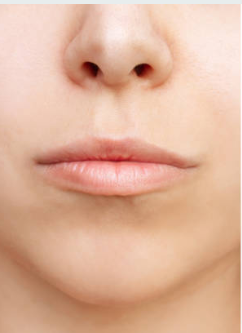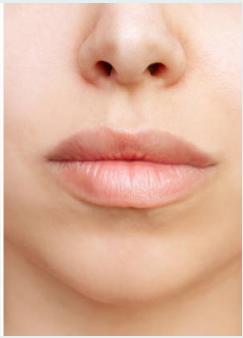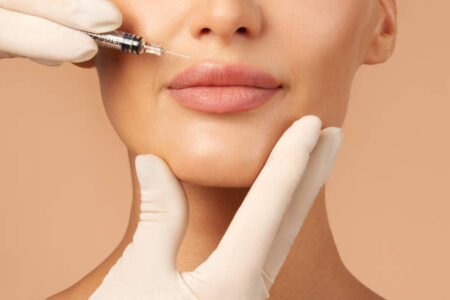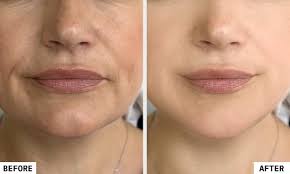Dermal Fillers: Where Youthfulness Meets Elegance
What are Dermal Fillers?
Dermal fillers are injectable, gel-like substances used in non-surgical cosmetic procedures to restore lost facial volume, smooth fine lines and wrinkles, and enhance facial contours. As the body ages, it loses collagen and fat, leading to thinner skin and sagging. Fillers replace this lost volume, providing a more youthful appearance.
Types of Dermal Fillers
- Hyaluronic Acid (HA) Fillers: The most widely used type, HA is a naturally occurring substance in the skin that helps with hydration and volume. HA fillers are soft, temporary, and can be dissolved if a patient is unhappy with the results. Popular brands include Juvéderm and Restylane.
- Calcium Hydroxylapatite (CaHA) Fillers: Composed of a mineral found in human bones, CaHA fillers are typically thicker and used for deeper wrinkles. They provide immediate volume and also stimulate natural collagen production. A common brand is Radiesse.
- Poly-L-lactic Acid (PLLA) Fillers: A biodegradable, synthetic substance that acts as a “collagen stimulator.” Its effects are gradual, building volume over several months as the body produces new collagen. Results can last for two years or more. Sculptra is a common PLLA filler.
- Polymethylmethacrylate (PMMA) Fillers: A semi-permanent filler consisting of microscopic spheres suspended in a collagen-based gel. The PMMA beads remain in the skin to provide long-term structural support. Bellafill is a PMMA filler.
- Autologous Fat Injections: A surgical procedure where fat is harvested from one part of the patient’s body using liposuction, purified, and injected into the face. Results can last for many years.
Areas Treated with Dermal Fillers
- Cheeks and temples: To restore lost volume and lift sagging skin.
- Lips: For plumping, enhancing shape, and smoothing vertical lip lines.
- Nose and mouth: To smooth out nasolabial folds (lines from nose to mouth) and marionette lines (creases at the corners of the mouth).
- Under-eyes (tear troughs): To reduce dark circles and hollows.
- Chin and jawline: To enhance definition and facial contours.
- Hands: To restore lost volume.
The Procedure and Recovery
- Consultation: A qualified medical professional will evaluate your skin, discuss your aesthetic goals, and recommend the right type of filler.
- Preparation: The injection sites are cleaned, and a numbing cream may be applied to minimize discomfort. Many fillers also contain a local anesthetic like lidocaine.
- Injection: The provider injects small amounts of filler under the skin using a very fine needle or a cannula. The process typically takes 15 to 30 minutes.
- Immediate Results: Results are often visible right away. The provider may gently massage the area to ensure the filler is evenly distributed.
- Recovery: Minimal downtime is required. Mild and temporary side effects like swelling, bruising, redness, and tenderness are common and usually subside within a few days.
Risks and Safety
While dermal fillers are generally safe when administered by a licensed and experienced healthcare provider, serious risks can occur. Common, mild risks include bruising, swelling, redness, and pain at the injection site. Rare, severe risks include vascular occlusion, infection, and allergic reactions.
Conclusion
Dermal fillers are a popular, non-surgical cosmetic treatment used to restore lost facial volume, smooth fine lines and wrinkles, and enhance facial contours. With various types of fillers available, it’s essential to choose a qualified provider to determine the best treatment plan for your individual needs.
How it Works
Consultation & Assessment
A qualified practitioner reviews your skin, medical history, and desired goals to determine the right type of filler.
Preparation & Cleansing
The treatment area is cleaned, and a numbing cream may be applied to minimize discomfort.
Precise Injection
The filler gel is carefully injected into targeted areas such as cheeks, lips, or under the eyes to restore volume and smooth lines.
Immediate Results & Aftercare
Results are visible right after the procedure, with minimal downtime. Mild swelling or bruising may occur but usually subsides quickly.


have a question?
Quick answers to questions you may have
What are dermal fillers used for?
A: Dermal fillers are used to restore lost volume, smooth wrinkles, enhance lips, and improve facial contours for a youthful appearance.
How long do dermal fillers last?
A: Depending on the type of filler and treatment area, results can last from 6 months to over 2 years.
Are dermal fillers safe?
A: Yes, when performed by a licensed and experienced professional. Mild side effects like redness, swelling, or bruising are common but temporary. Serious risks are rare.
Is the treatment painful?
A: Most patients experience only mild discomfort. Practitioners often apply a numbing cream or use fillers with lidocaine for added comfort.

